Primary Prevention and Health Promotion: Hand Hygiene & Sanitation
VerifiedAdded on 2022/08/12
|12
|864
|42
Presentation
AI Summary
This presentation addresses primary prevention and health promotion through hand hygiene and sanitation within a public health clinic, emphasizing the epidemiological rationale behind these practices. It highlights the importance of handwashing and proper sanitation to reduce the spread of diseases, referencing statistics from organizations like the CDC and WHO. The presentation outlines a nursing diagnosis related to respiratory diseases and other illnesses caused by poor hygiene, targeting a general audience with a focus on relatable and personalized information to enhance learning. Utilizing the Health Promotion Model, the presentation aims to enlighten attendees about the risks of inadequate hygiene and teach effective handwashing techniques and sanitation practices. The program's success is evaluated through pre- and post-program questionnaires, assessing changes in perception and the incorporation of learned practices into daily life, promoting 'Health for All' by reinforcing hygiene as a basic right. The presentation also focuses on engaging the audience through interactive communication and relatable experiences to encourage participation and behavioral change.
1 out of 12
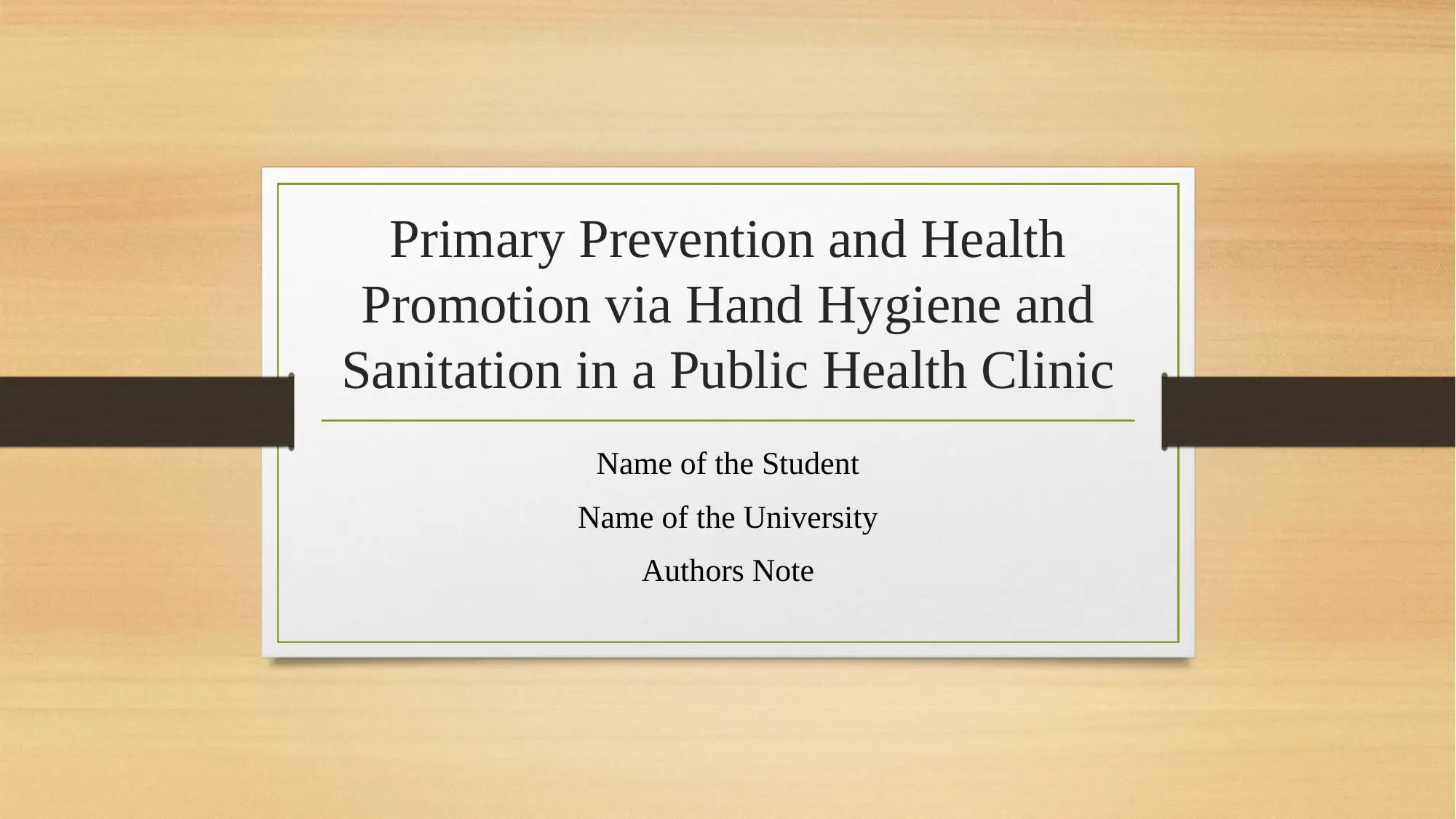
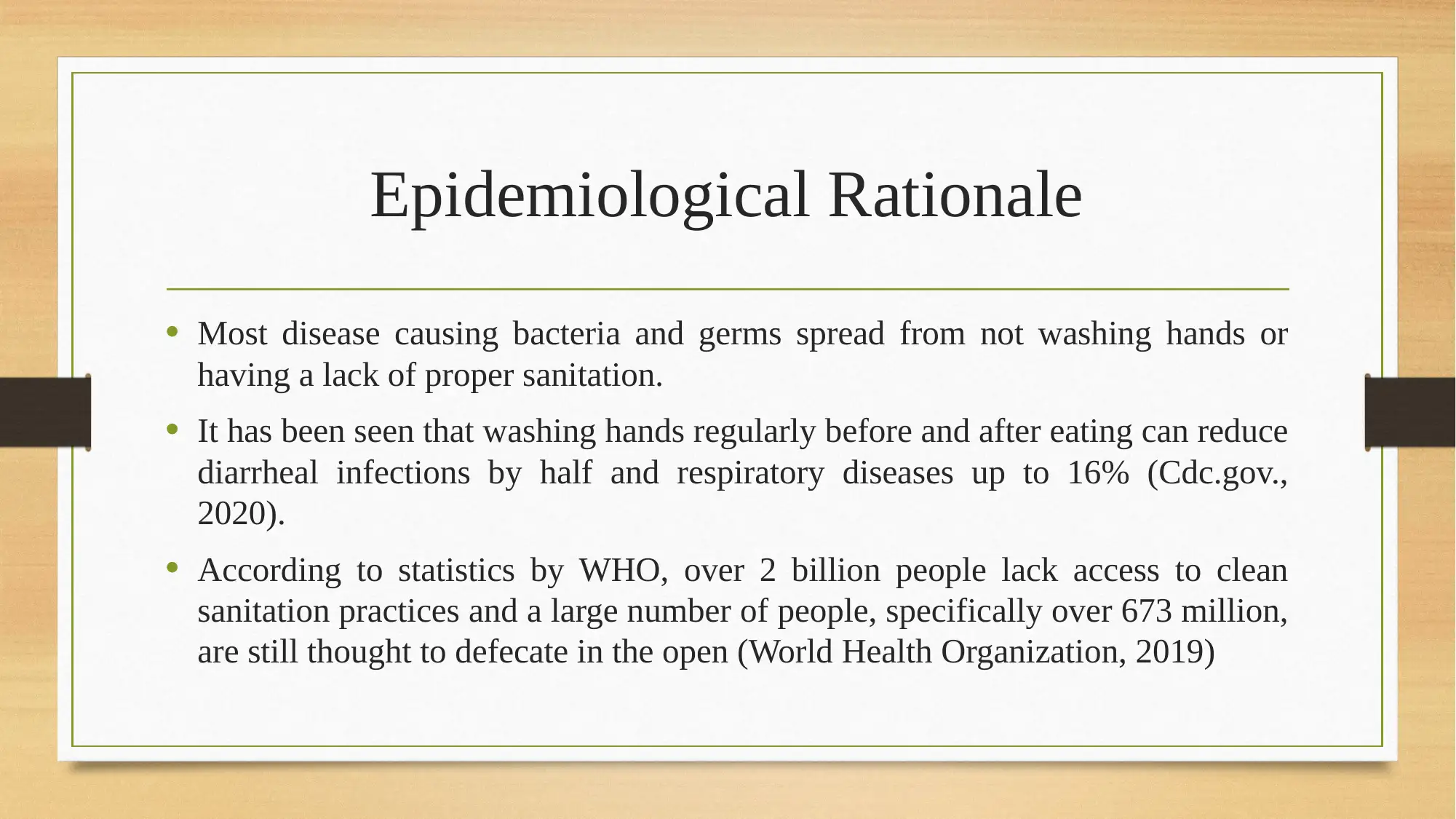
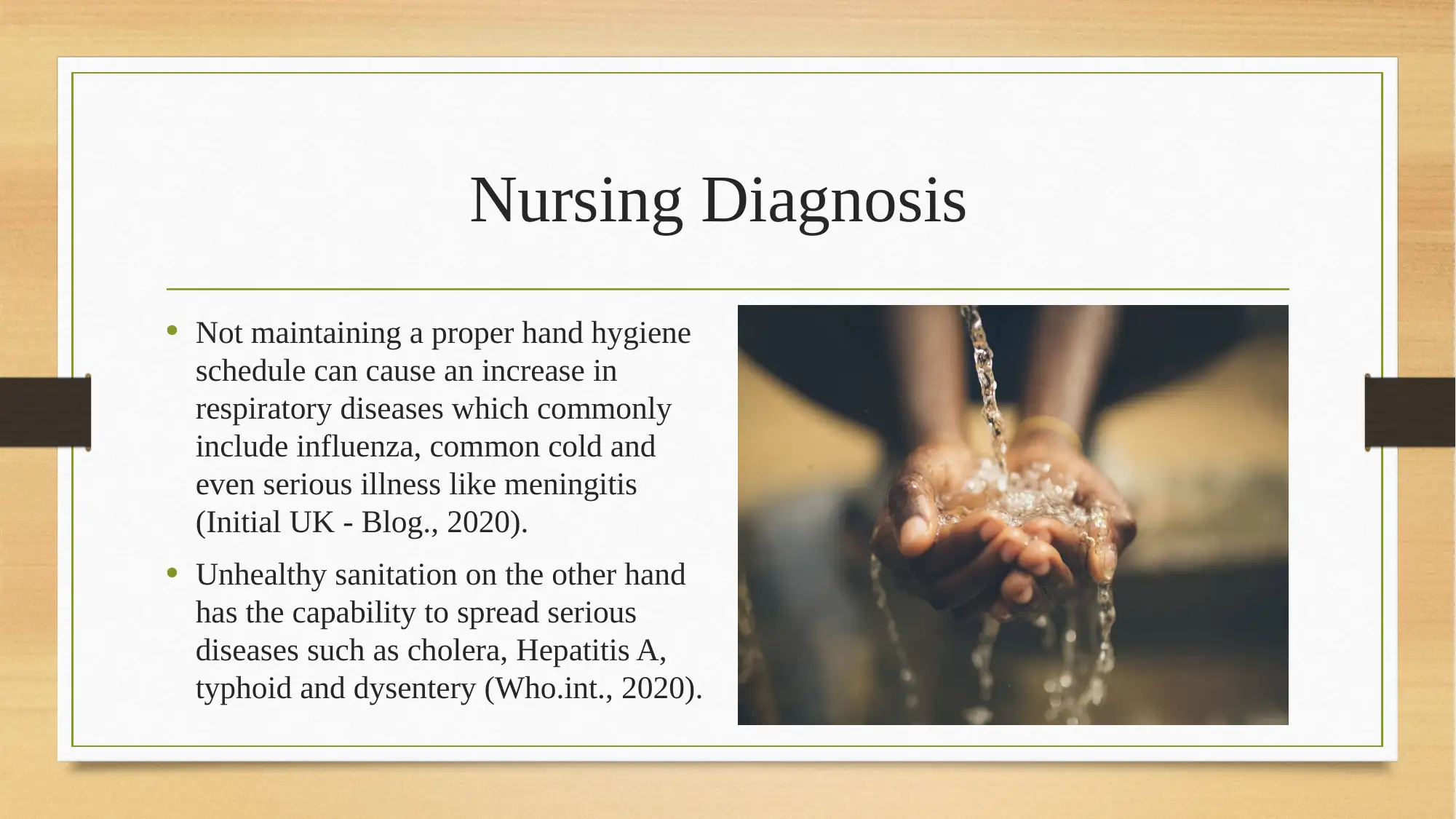

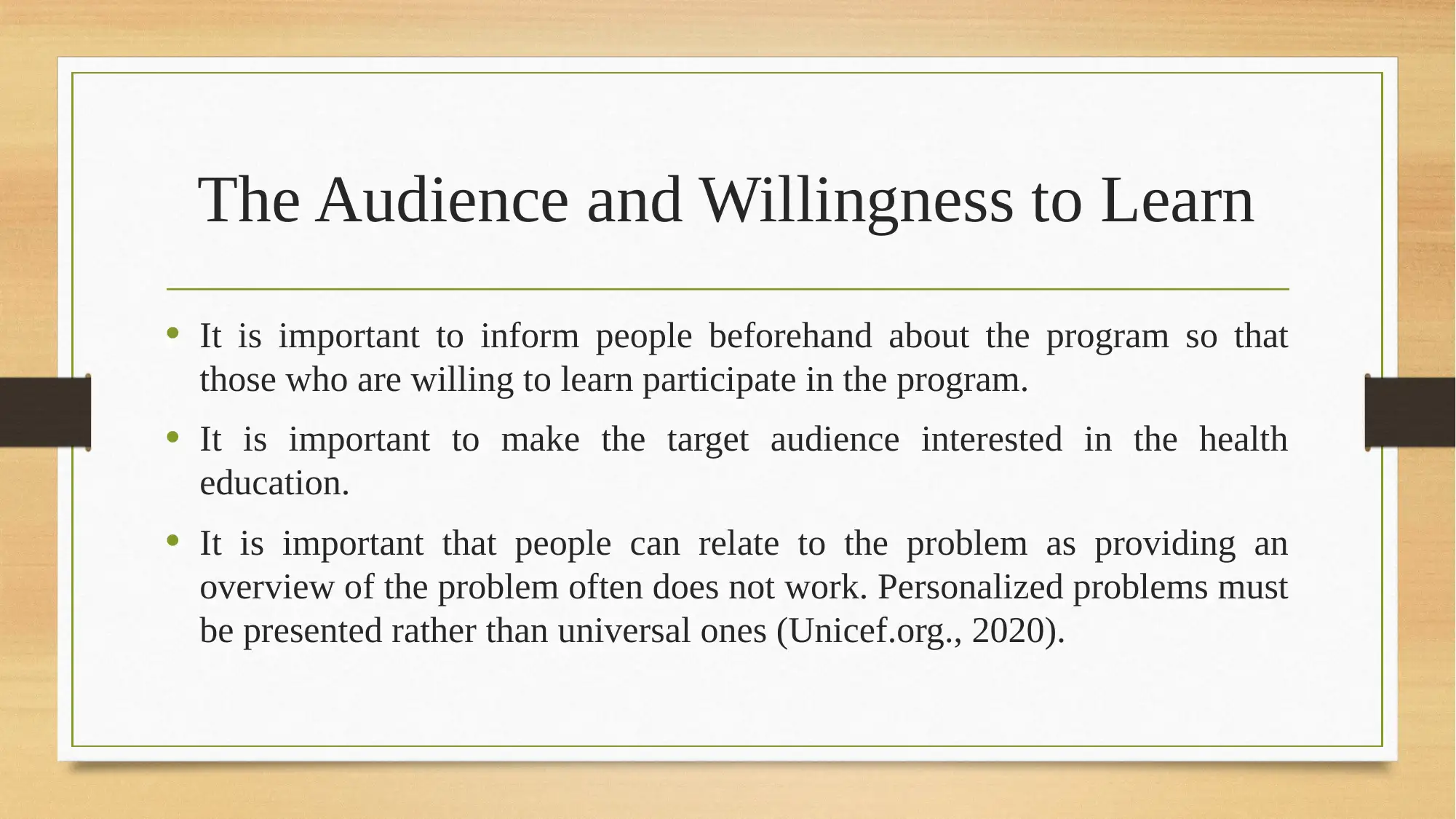
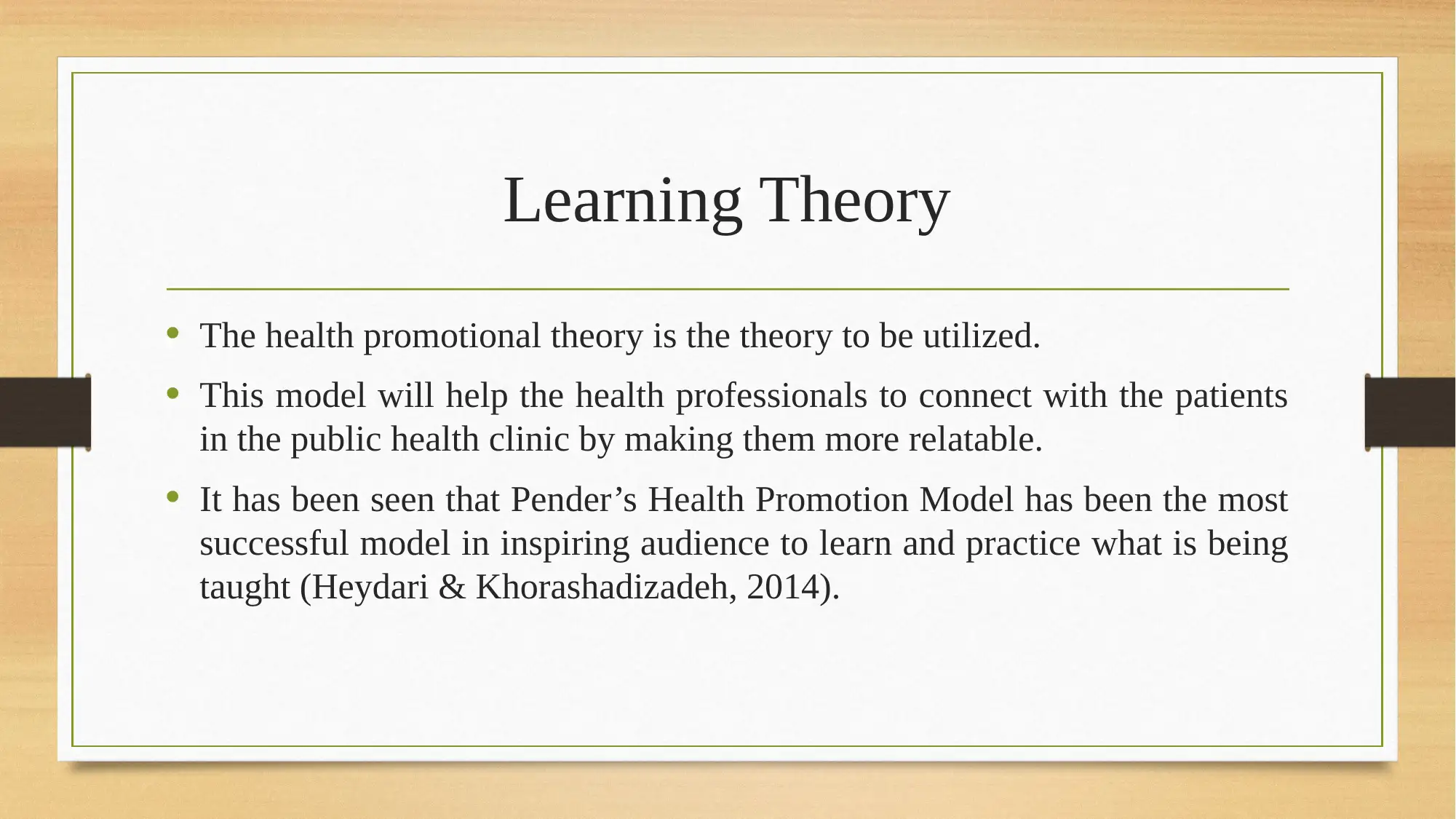
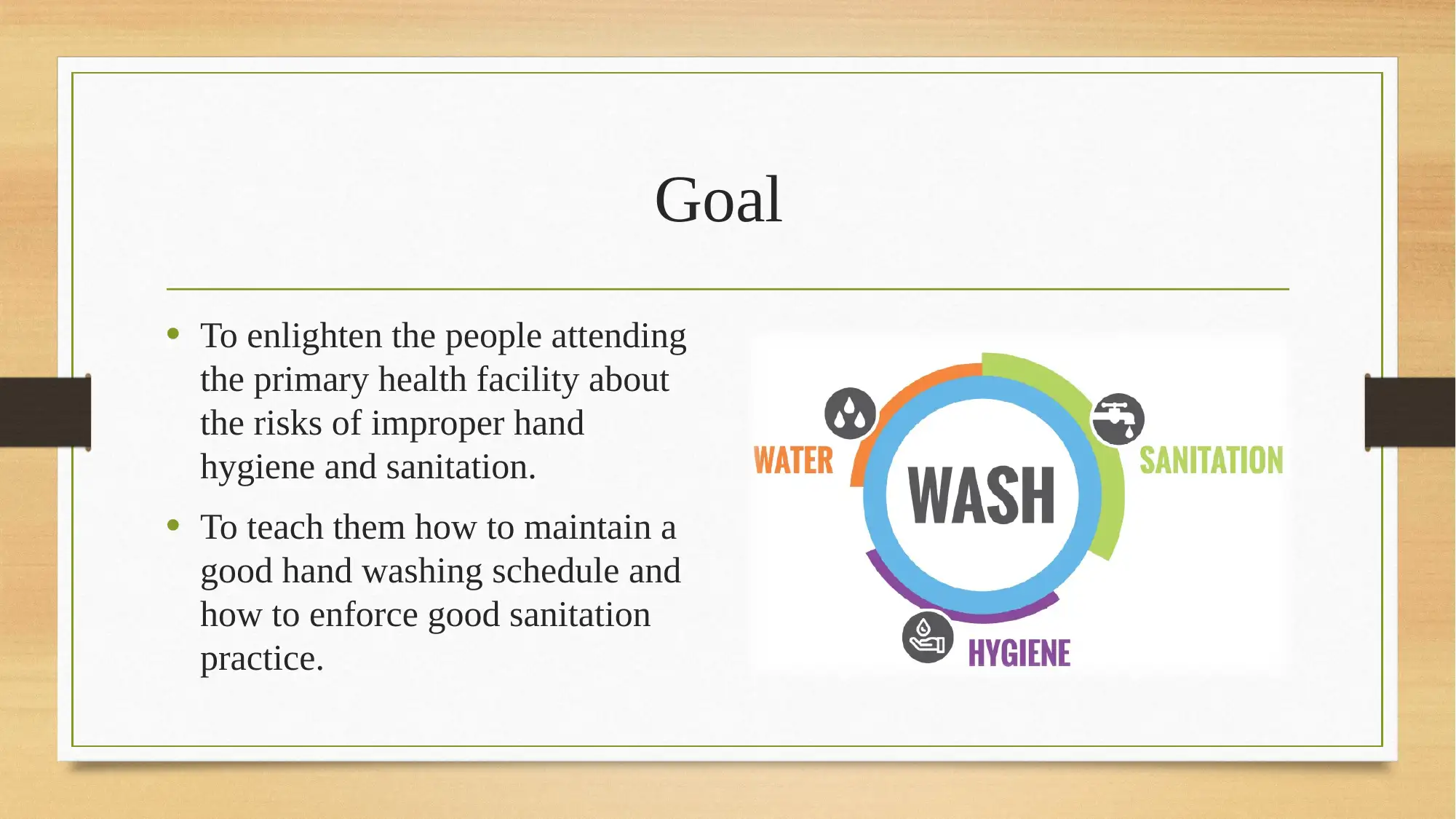


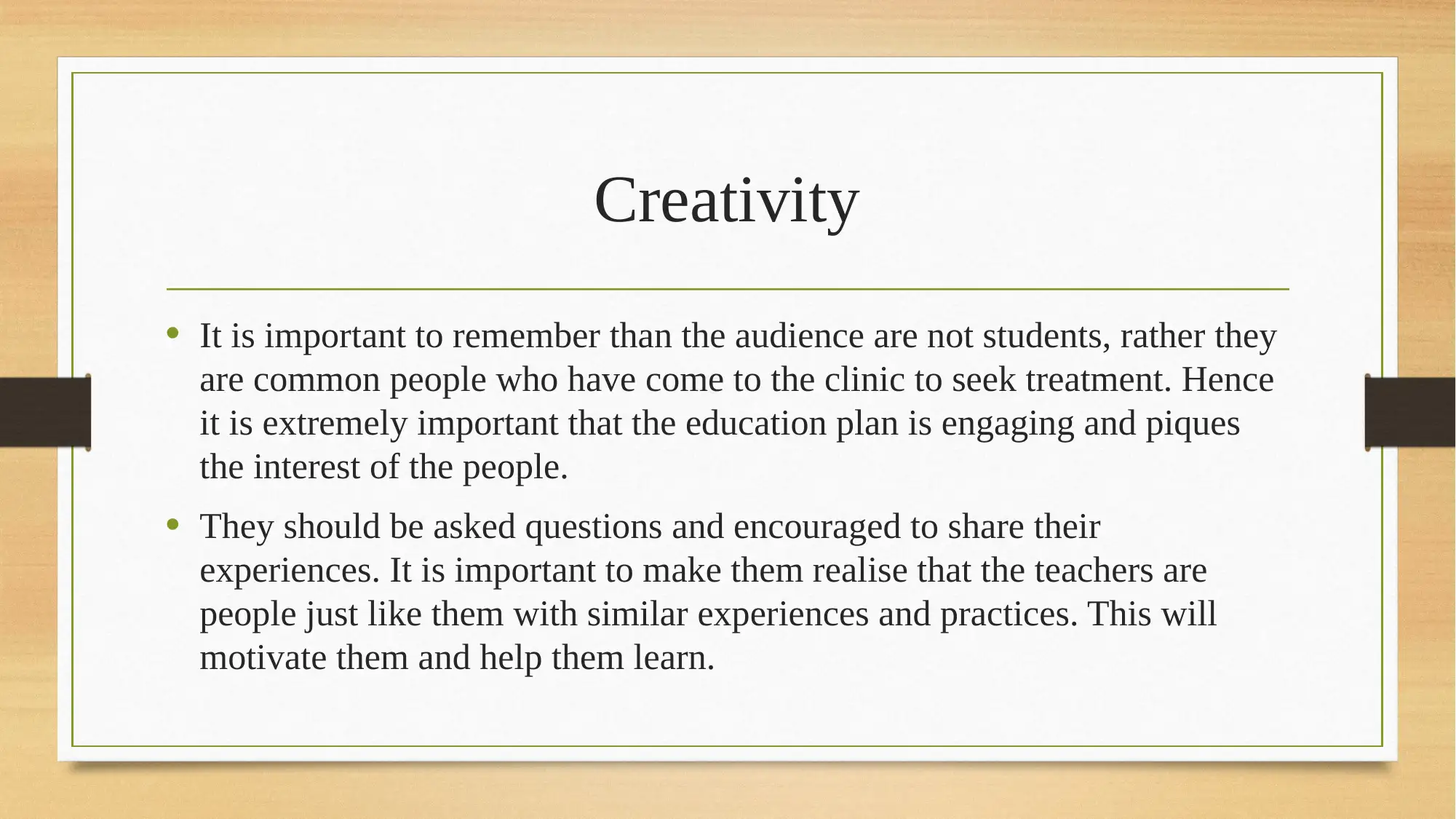
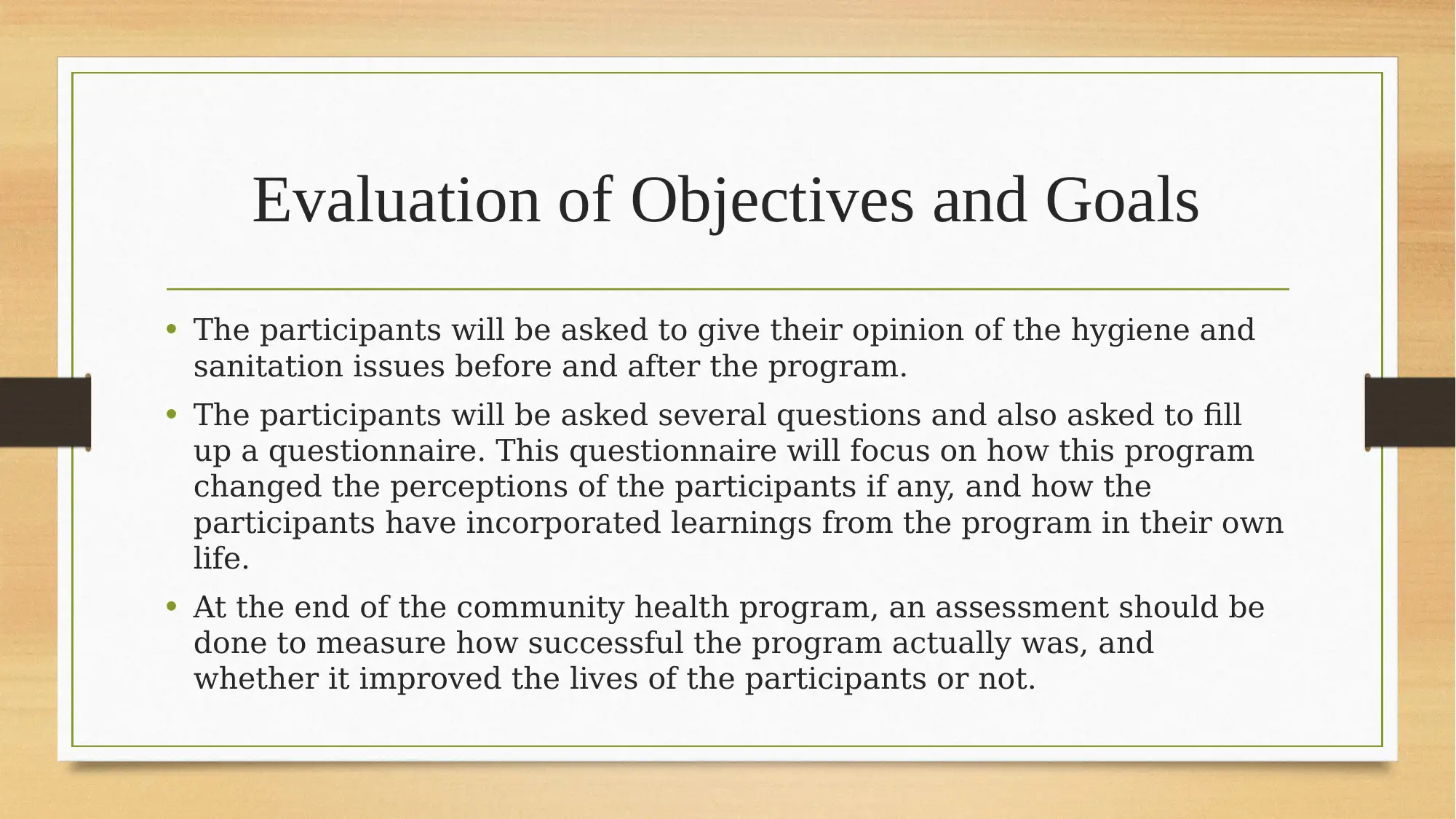
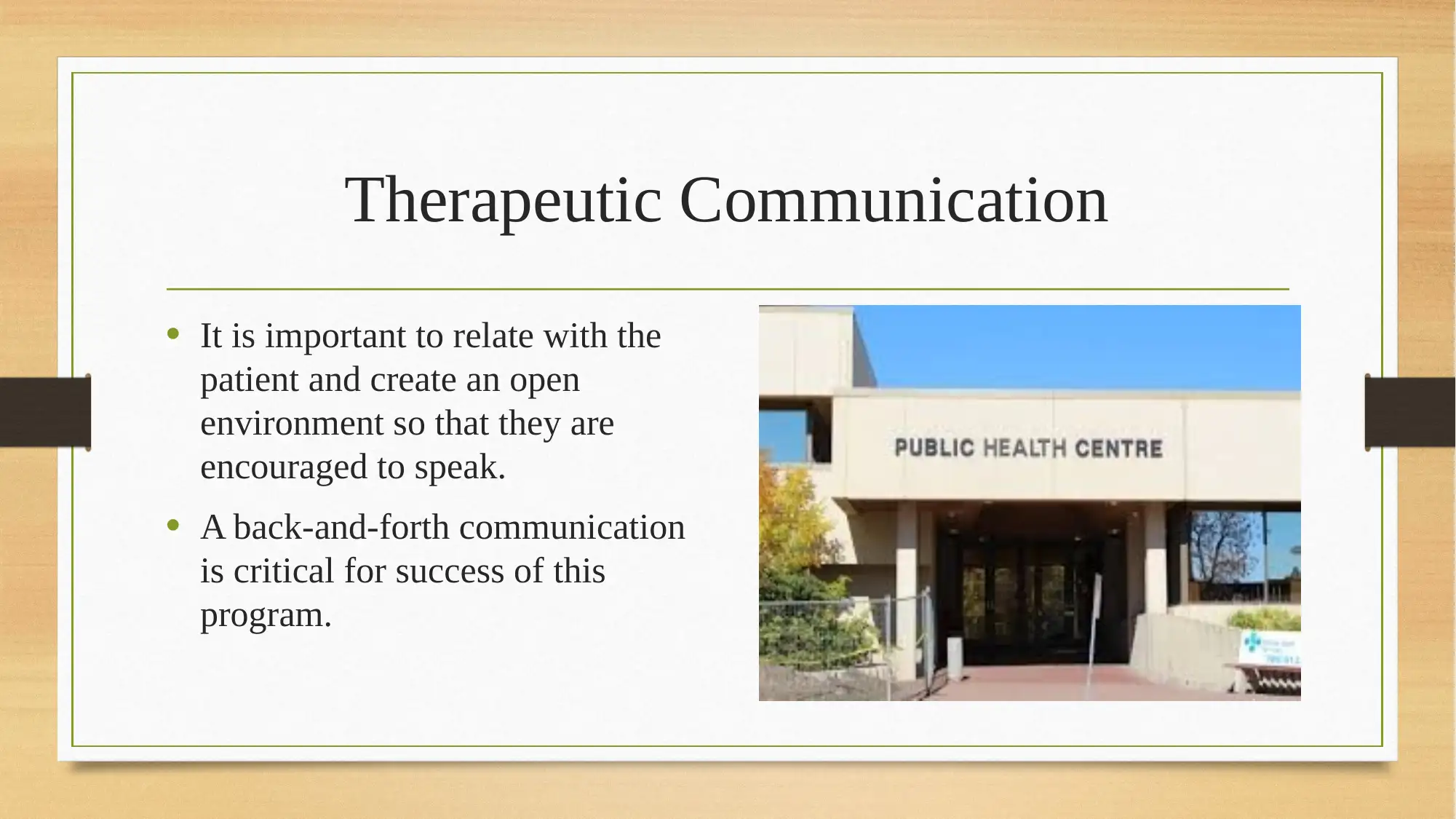
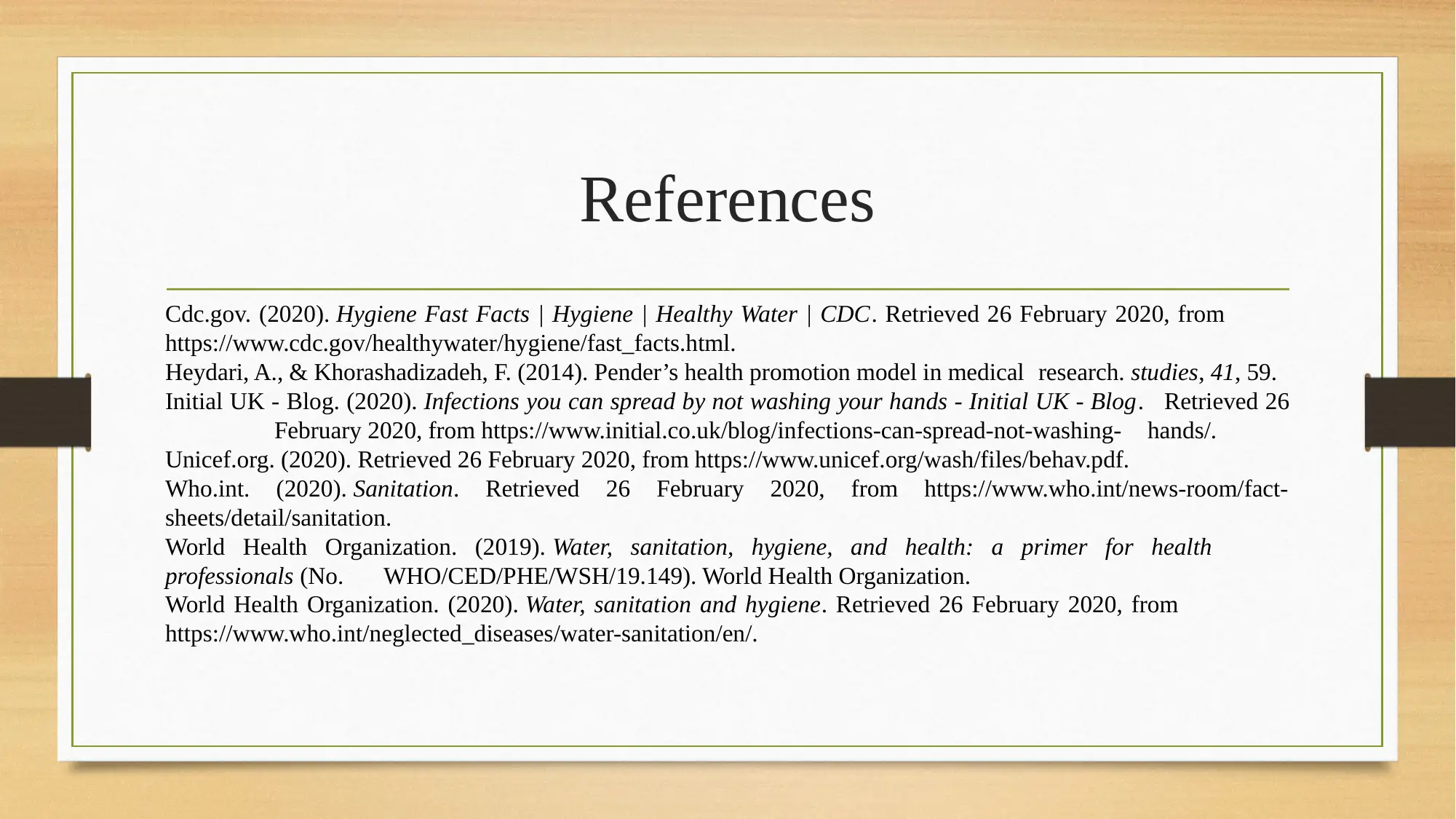






![[object Object]](/_next/static/media/star-bottom.7253800d.svg)